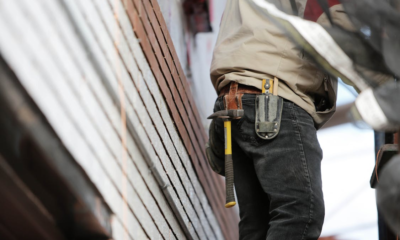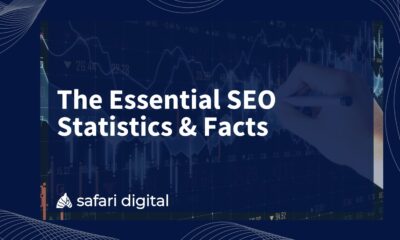Tech
12 Best Practices for Optimising Website Performance and Loading Speed
Published
12 months agoon

There’s so much that goes into website development, from making a site look visually appealing to making it run the way it should. Today, we’ll be focusing on website performance and loading speed.
The average web user often forgets about these two things – until they encounter a site with terrible performance and loading speeds. Poor performance can be frustrating and seriously make a bad impression on your users.
Is your website’s performance and loading speed not quite up to par? No worries; there are things your web design team can do to make it better.
Why Is Performance and Loading Speed So Important, Anyway?
This question is extremely easy to answer – people prefer faster websites that perform well! We live in a fast-paced society, and website development trends reflect that.
If your site takes too long to load, a new visitor could click away within a few seconds. If it does load but performs poorly, then your visitor could still click away while thinking negatively about your site (and your business).
12 Helpful Practices for Making Your Website Run Better
So, how can you optimise your site’s performance and speed? Here are 12 good practices:
1. Audit Your Site. It’s difficult to fix a problem if you don’t know what it is or where it is. Before you do anything, perform an audit to see where the problems are on your site. You can use helpful AI web design tools to automatically analyse your website’s speed, content and data.
Once you have an overview of the status of your site, you’ll have a much easier time figuring out where to start and what to do.
2. Use A Content Delivery Network for Your Site. A content delivery network (CDN) is a network of servers that are meant to deliver a website’s content to users from the specific server that is closest to them. This can significantly improve loading speeds for users in different parts of the world and could be your best choice.
For instance, if you have a site that is hosted in New Zealand but you have users in the United States, a CDN can deliver the content from a server in the United States, improving loading speeds for them. CDNS is becoming more popular in website development because of this.
3. Optimise Your Images. Images are generally the biggest files on a site, so it’s important to optimise them if you can. You can do this by using a tool to compress your images without sacrificing quality.
You could greatly reduce the file size of an image without hurting its quality. This simple step can significantly improve your website’s performance without causing any noticeable dips in quality.
4. Don’t Go Overboard with Your Website’s Visual Design. A big part of website development is making sites look beautiful and appealing. Still, too many fancy widgets and animations could be taking a toll on your performance and loading speed. Try to find a good balance between beauty and functionality.
Even if your site is the most beautiful site on the internet, no one will want to wait forever for each webpage to load.
5. Minify Your Code. Minifying your code can greatly reduce the file size of your HTML, CSS and JavaScript files. This can improve loading speed by making it much faster for browsers to download and parse the code.
6. Combine Your CSS and JavaScript Files. Combining your CSS files and JavaScript files can reduce the amount of HTTP requests that your site makes, so it is a smart move to make regarding website development. Doing so can improve loading speed by making it faster for browsers to download files.
7. Use A Caching Plugin. A caching plugin can store static files on your server, such as images or CSS files. These plugins can improve performance by reducing the times a browser has to download these files. With a caching plugin, your users’ browsers don’t have to download the same files over and over again every time they visit your site.
8. Use A Lazy Loading Plugin. This type of plugin can delay the loading of image files until they are actually visible to the user. These plugins improve performance by preventing images from loading on pages that the user isn’t viewing.
For example, a lazy loading plugin can prevent an image from loading until a user scrolls to them, which can improve loading speed. Many website development professionals are now using these kinds of plugins.
9. Use A Web Font Loader. A web font loader can asynchronously load web fonts, which can improve loading speed by preventing browsers from blocking the rendering of the page while the fonts are loading.
10. Reduce the Number of Redirects. Each redirect adds an extra HTTP request, slowing down your website a little more. So, it’s vital to reduce the number of redirects on your site as much as possible without hurting the site. If there’s an unnecessary redirect on your site, consider removing it if you can.
11. Use A Faster Hosting Provider. Did you know that your hosting provider can have a large impact on your website’s performance? If you are experiencing slow loading speeds, it may be worth switching to a faster hosting provider.
12. Test Your Website Regularly and Fix Issues That Pop Up. This isn’t a website development quick fix but rather something your web design team should do regularly. Routinely check your site to see how it’s performing. Hopefully, it’ll be good and speedy. If it’s not, then you can search for and fix any issues that are present.
One Easy Step to Make Your Auckland Business’s Website Better
These twelve tips are extremely helpful if you want to make your website better, but there is one additional step that could be your key to an amazing website for your Auckland business – speak to us at Kiwi Website Design! We’re pros when it comes to web development, and we’d be thrilled to help you with our services.
If you’d like to know more, then please feel free to give us a buzz on XXXX or use our contact page.
Kiwi Website Design – helping NZ sites stay speedy and amazing.
Recent News


4 Amazing Trips for Your Family
Choosing somewhere for a family vacation that would pique the attention of adults and kids alike can be a fun...


Customising Your Makeup with Blendable Blush Options
In cosmetics, one’s face is a canvas for self-expression and creativity. Among the myriad of products available, blush is a...


The Benefits of Regular Home Maintenance
Regular home maintenance is essential for maintaining and even raising the value of your house. A proactive approach to repairs...


Understanding the Importance of SEO in Adelaide
In the digital marketplace, Adelaide businesses are in a continuous contest to gain the attention of their target audiences. With...


Breaking Down the Numbers: Understanding the Average Traveling Nurses Pay
The open road, adventure, and the chance to heal – travel nursing promises an undeniable allure. But amidst the excitement,...


Dealing with Oily Skin in Summer: Tips and Tricks
As the temperature rises, those with oily skin often face an additional challenge—maintaining a clear and balanced complexion. Excess oil...


Mountain Wedding Ideas for 2024
A mountain wedding is a stunning choice for couples who cherish nature and desire a distinctive wedding experience. Whether you...


3 Of The Best Ways To Keep Your Salon Clean
It is of the utmost importance to ensure that a salon is kept scrupulously clean, not just for the sake...


3 Reasons You Should Get Blood Tests Every Year
Regular blood tests are essential for preserving general health and identifying potential problems early on. Medical professionals can evaluate your...


How to Make Your Next Crafts Project Pop
Crafting is a creative outlet that allows individuals to express themselves through various mediums such as paper crafts, sewing, painting,...
